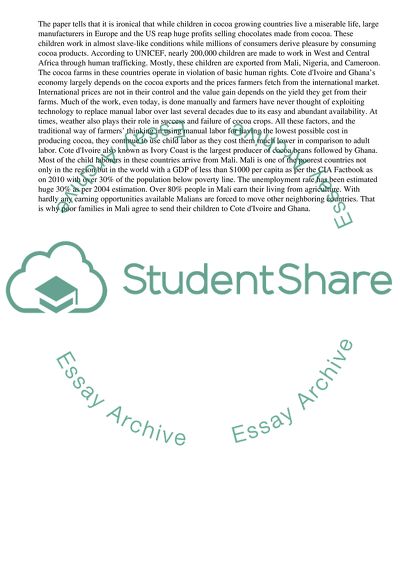Cite this document
(“Child Slavery in West Africa's Cocoa Plantations Research Paper”, n.d.)
Child Slavery in West Africa's Cocoa Plantations Research Paper. Retrieved from https://studentshare.org/business/1636585-child-slavery-in-west-africas-cocoa-plantations
Child Slavery in West Africa's Cocoa Plantations Research Paper. Retrieved from https://studentshare.org/business/1636585-child-slavery-in-west-africas-cocoa-plantations
(Child Slavery in West Africa'S Cocoa Plantations Research Paper)
Child Slavery in West Africa'S Cocoa Plantations Research Paper. https://studentshare.org/business/1636585-child-slavery-in-west-africas-cocoa-plantations.
Child Slavery in West Africa'S Cocoa Plantations Research Paper. https://studentshare.org/business/1636585-child-slavery-in-west-africas-cocoa-plantations.
“Child Slavery in West Africa'S Cocoa Plantations Research Paper”, n.d. https://studentshare.org/business/1636585-child-slavery-in-west-africas-cocoa-plantations.


